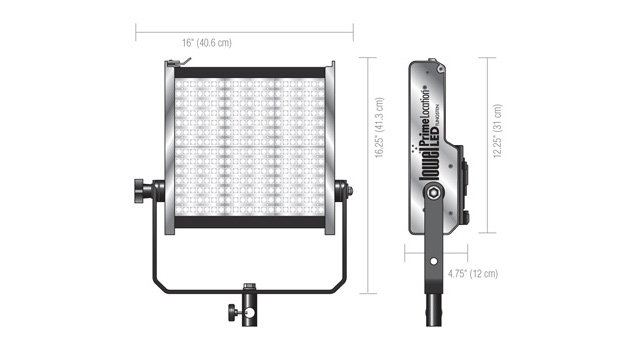Rugged and Weatherized for How We Really Work
How things have changed at Lowel. In the prehistoric age of my youth, circa 1970, the highly portable featherlight Lowel kit was a key part of every itinerant shooter’s travel package. The thin aluminum brackets and barndoors were fragile and would barely stay affixed to the large blistering hot GL lamps. By far, the most compelling attribute of the original Lowel kit was the high degree of control it offered and the ability to transport it in a tiny travel case.

Elegant and simple, the original Lowel kit changed the face of non-fiction filmmaking in the 1960s and 1970s.
Today the original Lowel kit is long gone. So too, presumably, will be its lightweight tungsten descendents, the omnipresent Omnis, Totas, and Ds. They continue to grace film and video sets in every corner of the world, but their days are surely numbered as cooler, more efficient, and increasingly more rugged LED instruments enter the market.
Forty years ago, a major challenge for shooters was simply generating enough light for basic exposure. In many instances, the capture of images—indeed anything at all with a satisfactory grey scale—was impossible given the meager ISO rating of most film stocks (like ISO 25 Ektachrome Commercial).
Things are quite different today, of course, with some ultra-sensitive digital cameras able to record virtually noise-free images at ISO 5000 or more. Obviously, our needs in portable lighting have changed dramatically in the current environment. We no longer need or want the traditional nuclear blast of light that had been the standard for decades of nonfiction, news, and documentary shooters.

The demand for a more-continuous-spectrum LED output is especially relevant in 3200K studio environments, where LED lighting that is deficient in red wavelengths may produce a splotchy texture in the skin of talent that contains significant red tones. The use of non-continuous LED fixtures in exterior environments tends to be less objectionable, as daylight inherently contains less red and thus is easier and more economical to balance given the current LED technology.
The latter point is especially relevant to broadcast news directors and shooters seeking appropriate lighting for field applications. Most LED lighting these days, even relatively cheap units, offers satisfactory performance under daylight conditions with okay color and a good CRI rating.


The bigger issue for shooters today is another matter altogether—the obligatory live shot of the egotistical weather guy or gal doing stand-up in a category-5 hurricane or in one of Boston’s 34 blizzards this year. In such cases, we are no longer so concerned with a light’s discontinuous output and lack of saturated red wavelengths. We want the light to work, and keep on working, in the face of extreme wet, cold, snowy, inhumane conditions.
Lowel’s Prime Location bi-color LED is rugged as hell and fully weatherized, a most welcome attribute given the typical flimsy aluminum or fragile plastic models on the market. The Prime Location’s spectral output may not be particularly impressive, but the unit’s beam spread of 50 degrees produces very smooth coverage, especially for such a compact fixture.

With a CRI rating of 91, the Prime Location LED offers decent if not great performance, with no measurable color shift when dimmed. Its 47-degree beam spread is very smooth, a key consideration for news and doc shooters lighting wider angle standups or scenes with multiple on-camera talent.
Lowel’s stellar new unit, made in Mexico by Fluotec, will find far-reaching applications in news operations, documentaries and nature programs, for which the Lowel Prime Location LED is close to ideal. The sealed panel, electronic controls for color and intensity, power on/off, and input cable, are all designed to withstand severe service conditions.
Fitted with monster-size heat sinks and a heavy aluminum chassis, the Lowel Prime Location LED is highly resistant to damage from physical shock and water. It is the first instrument of its kind to earn an IP Code of IP65—a handy capability for sure, given the proclivity of attention-grabbing weather reporters to seek out the most miserable conditions possible.












Leave a Reply